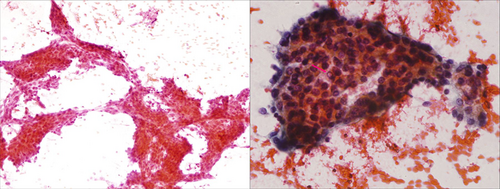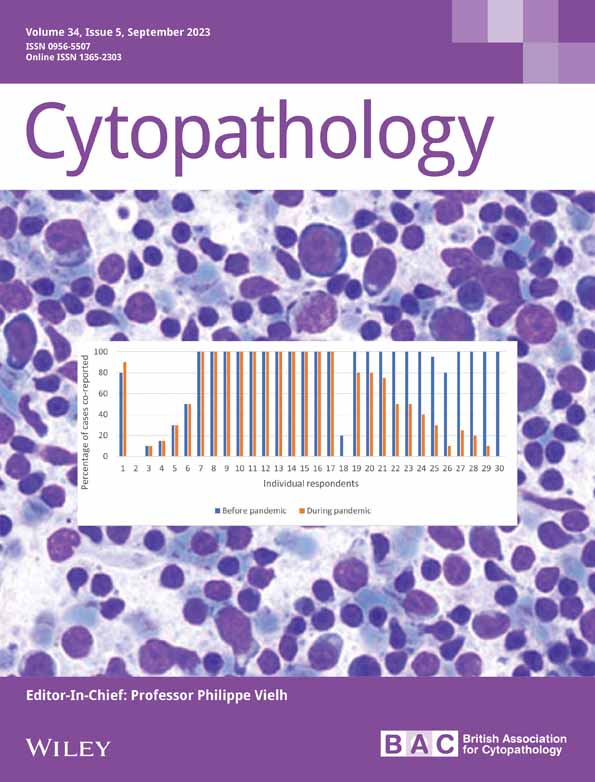Cytomorphology of paediatric hepatocellular carcinoma: A useful diagnostic adjunct
Aasma Nalwa and Tripti Nakra equally contributed to the work and writing of manuscript
Abstract
Introduction
Hepatocellular carcinoma (HCC) is a common primary malignancy of the liver but is rare in the paediatric age group; thus, it may be misdiagnosed as the more common tumour, hepatoblastoma. Management varies in both these tumours, and pathological diagnosis thus plays an important role for definitive therapy. Only a few case reports available in the literature have described the cytological characteristics of paediatric HCC. The present study was thus planned to evaluate the cytomorphological features of paediatric HCC.
Methods
Cases diagnosed with HCC on ultrasound-guided fine needle aspiration cytology over a period of 14 years were retrieved. The cases were evaluated for detailed cytological features including cellularity, architecture, sinusoidal wrapping, trabecular thickness, necrosis, anisonucleosis, chromatin, nucleoli, nuclear contours, bi- or multinucleation, intranuclear and intracytoplasmic inclusions, naked nuclei, extra-medullary haematopoiesis, monomorphism, and nuclear overlapping.
Results
Twelve cases of HCC were included in the study. The median age at diagnosis was 10 years. Serum alpha-fetoprotein level was raised in most of them. Five of the 12 cases were characterised as moderately differentiated, three as poorly differentiated, two as well differentiated, and two as the fibrolamellar type of HCC. Cytohistological correlation was performed in seven cases.
Conclusions
Ultrasound-guided fine needle aspiration serves as a useful tool to diagnose paediatric HCC and differentiate it from other primary hepatic malignancies, especially hepatoblastoma which closely mimics HCC in this age group, as serum alpha protein levels and imaging findings are unable to distinguish these two tumours.
Graphical Abstract
Photomicrograph highlighting the cytomorphological features of hepatocellular carcinoma (HCC) in a child showing trabecular architecture with peripheral and central sinusoidal endothelial cell wrapping. The cells are relatively monomorphic and have abundant cytoplasm. Intranuclear inclusion (arrow) is seen. Cytomorphological features of HCC are well known in adults and are not different from those in paediatric age. But it needs to be differentiated from hepatoblastoma which is much more common in the paediatric age group. The present study highlights that these tumours share some cytomorphological features. But since they have different clinical implications and management, a meticulous cytomorphological evaluation with clinico-radiological correlation can be a useful tool for correct diagnosis prior to planning treatment.
CONFLICT OF INTEREST STATEMENT
The authors declare no conflicts of interests.
Open Research
DATA AVAILABILITY STATEMENT
The data that support the findings of this study are available from the corresponding author upon reasonable request





